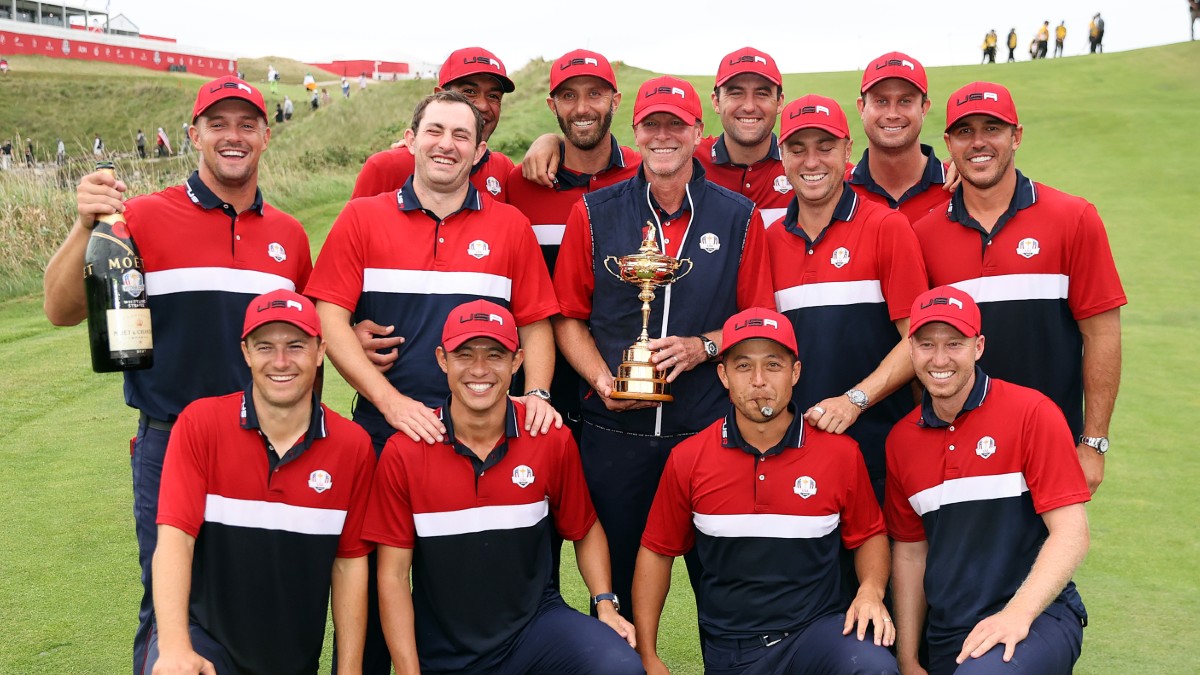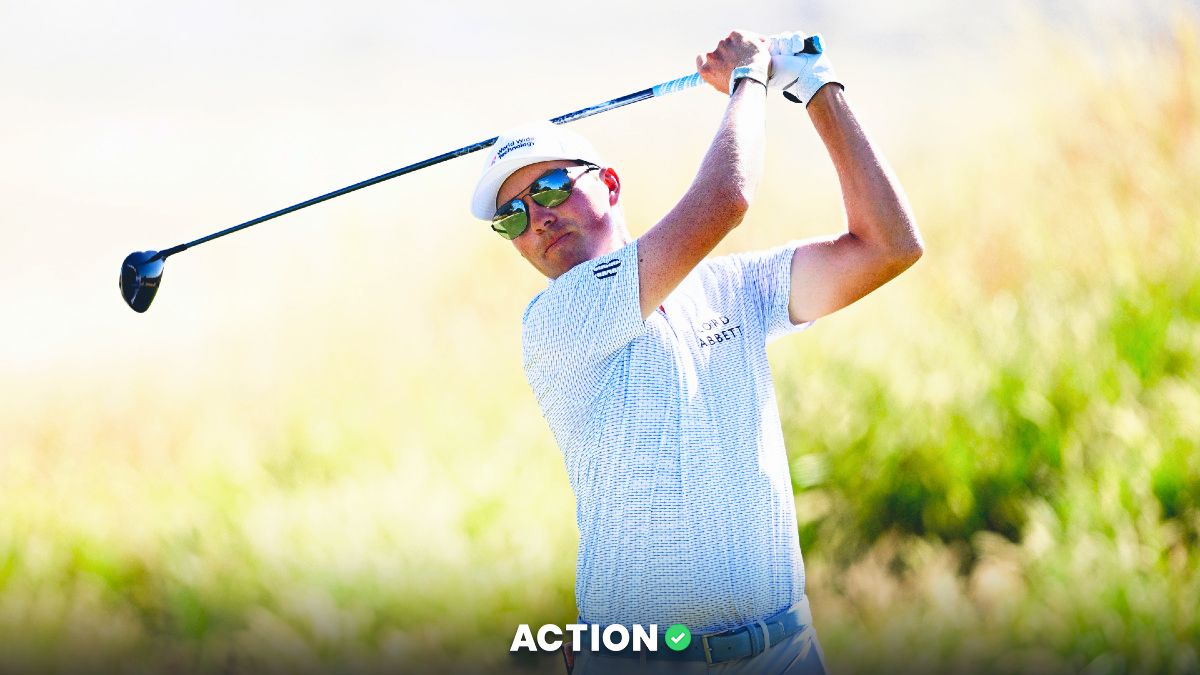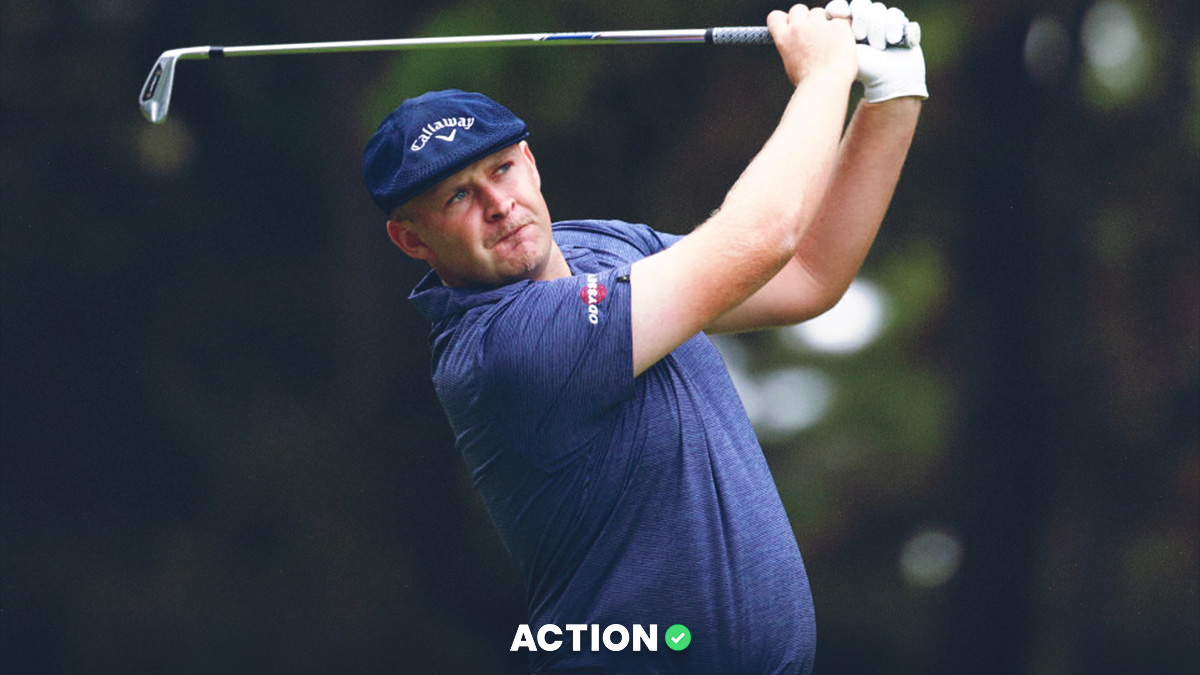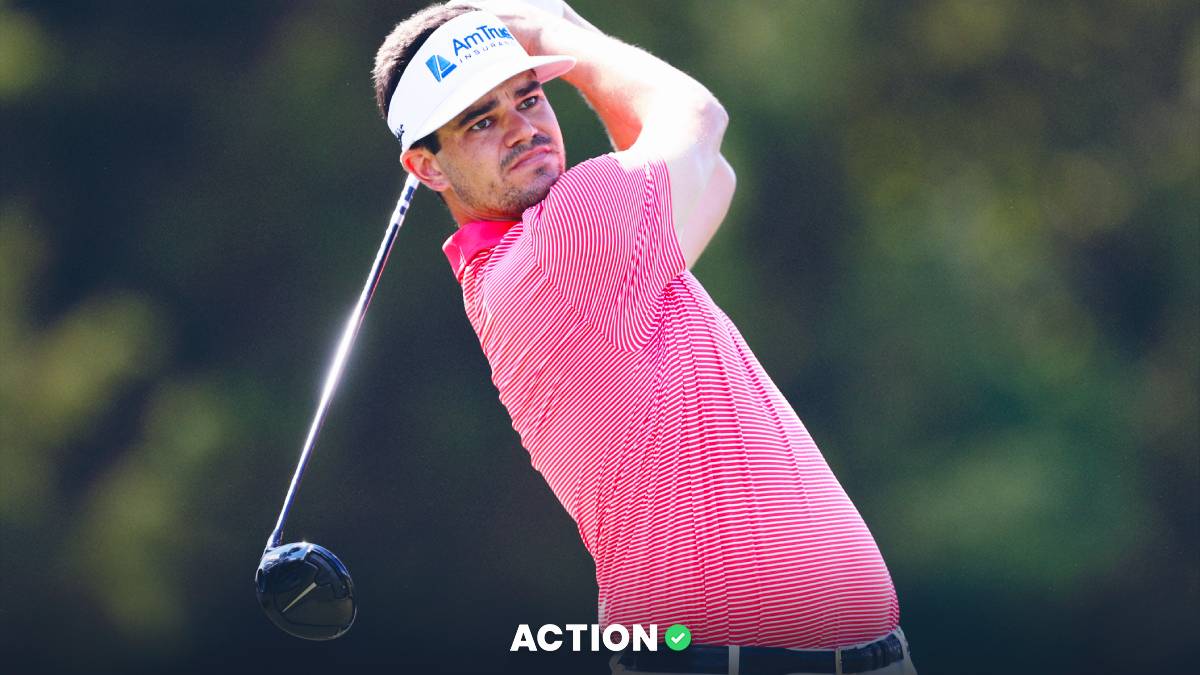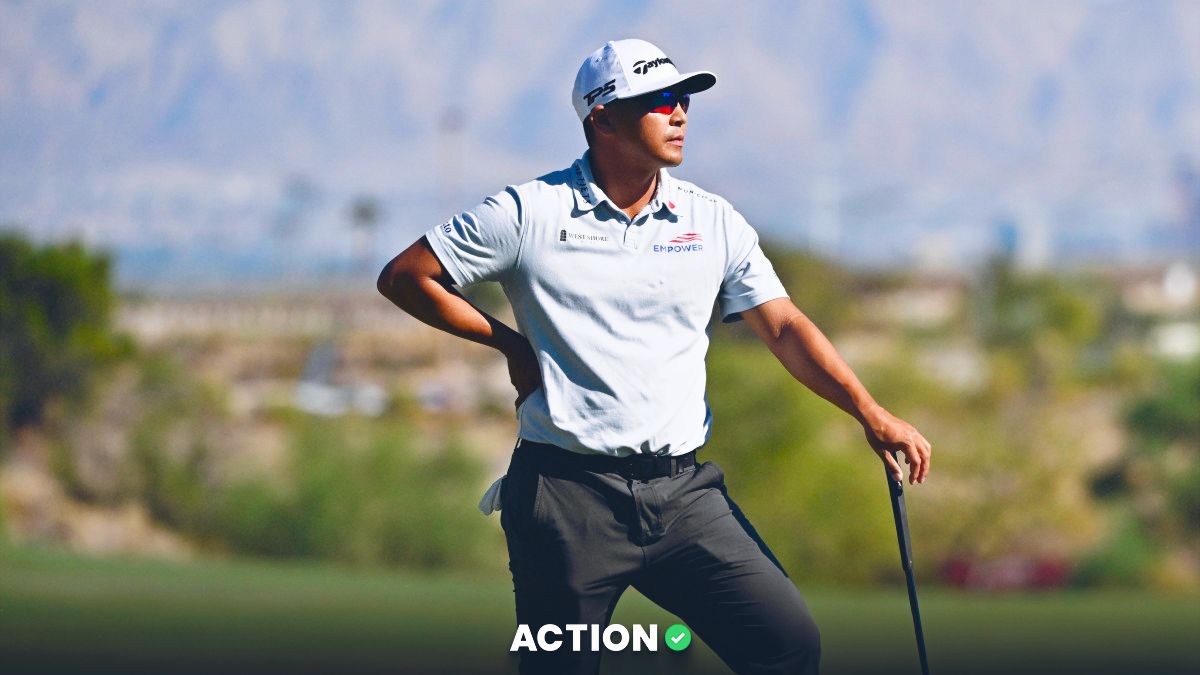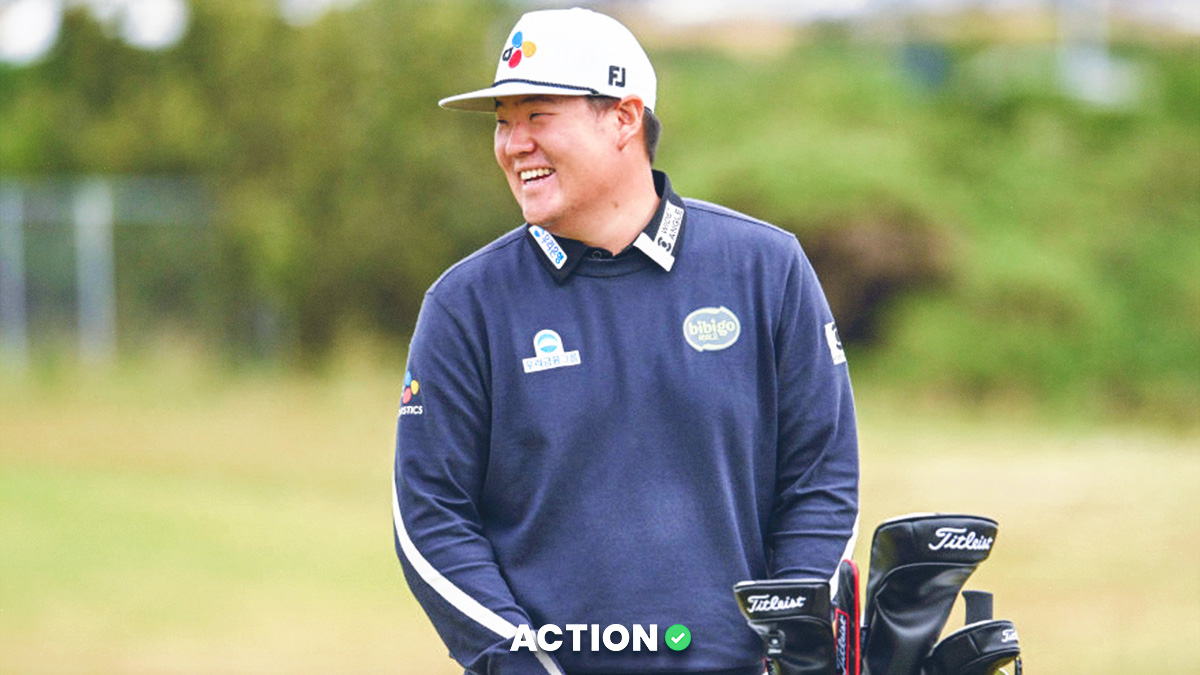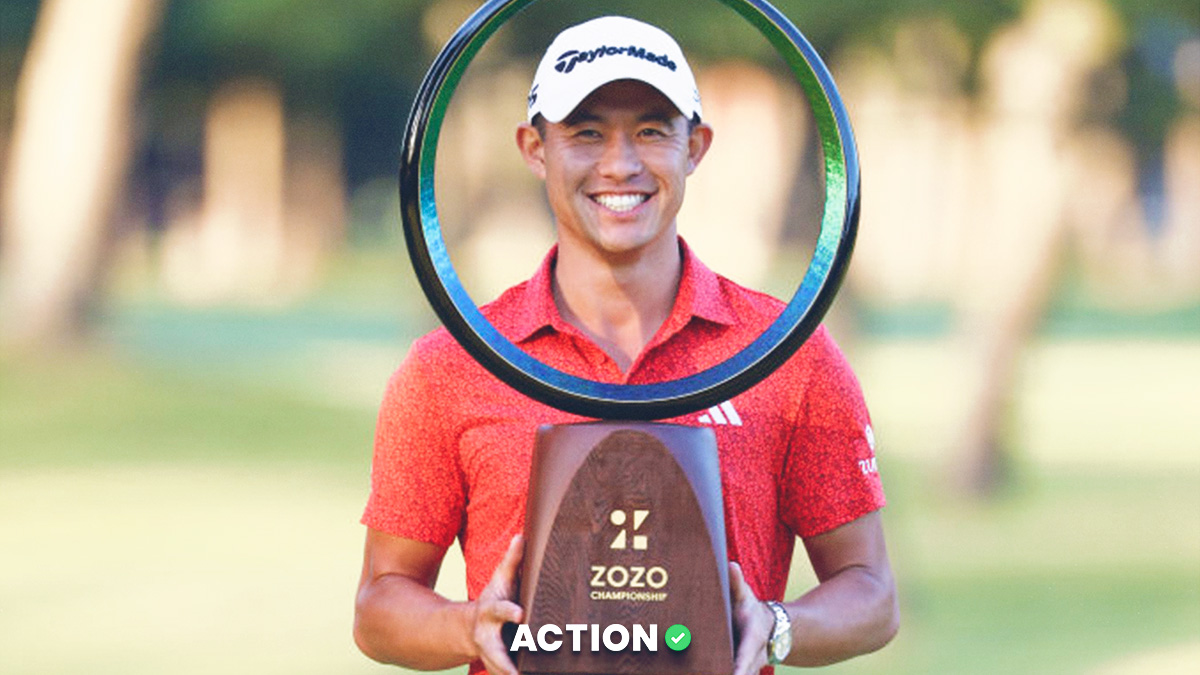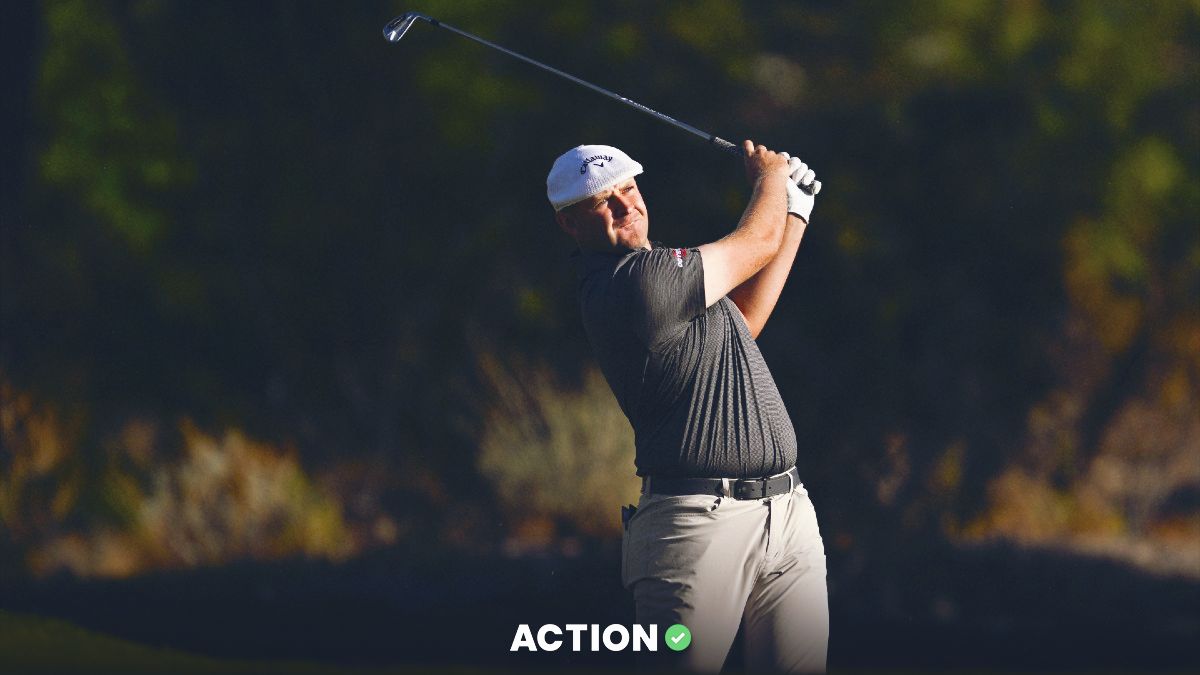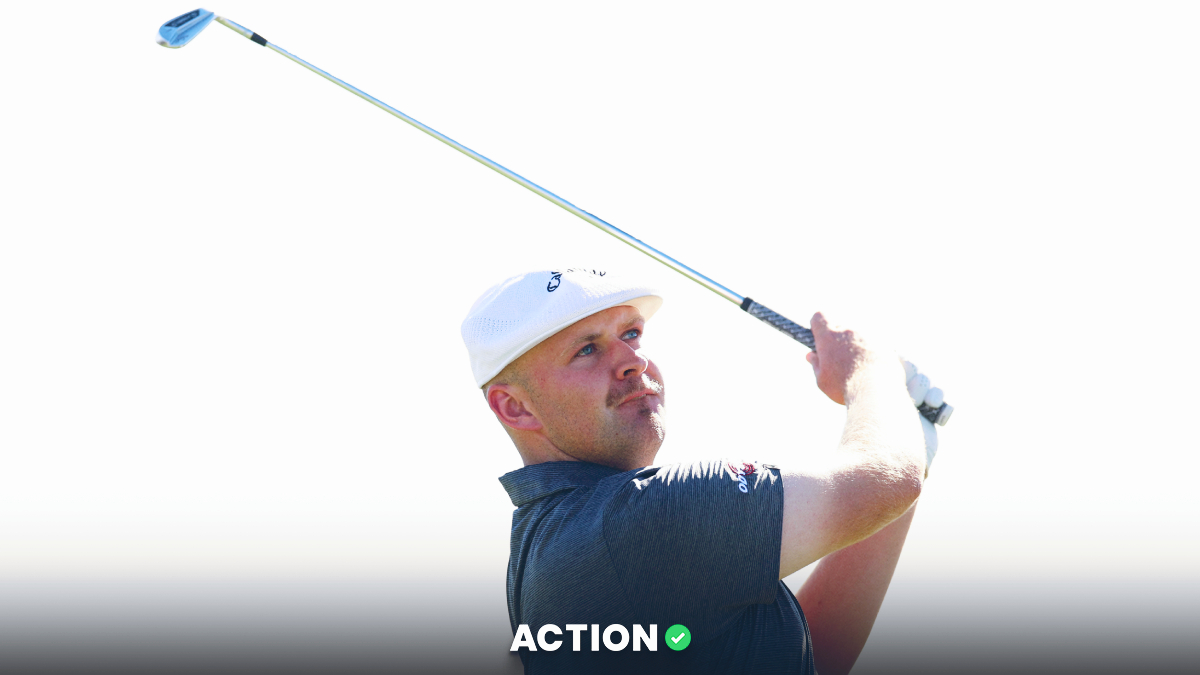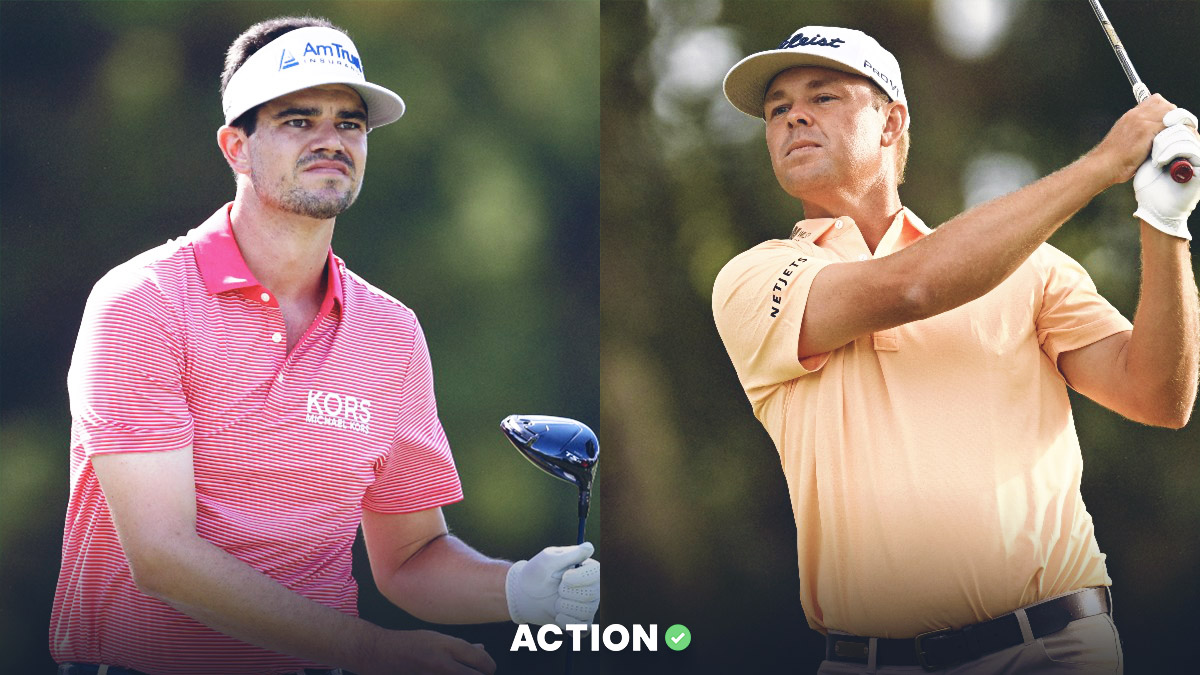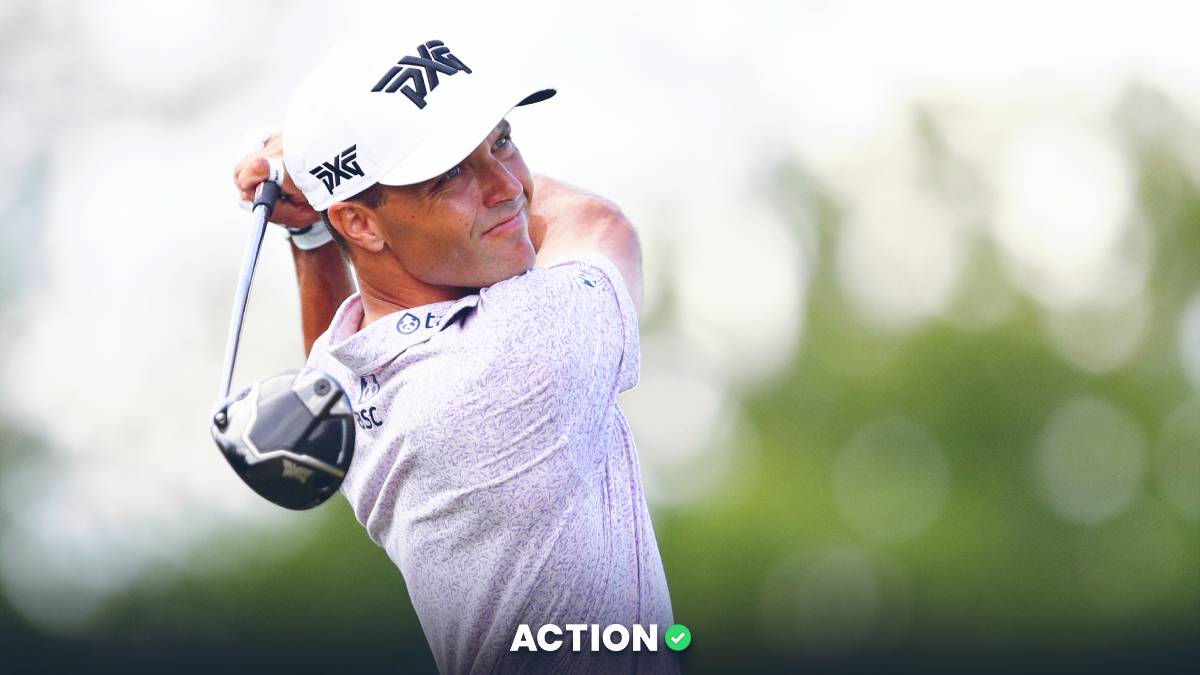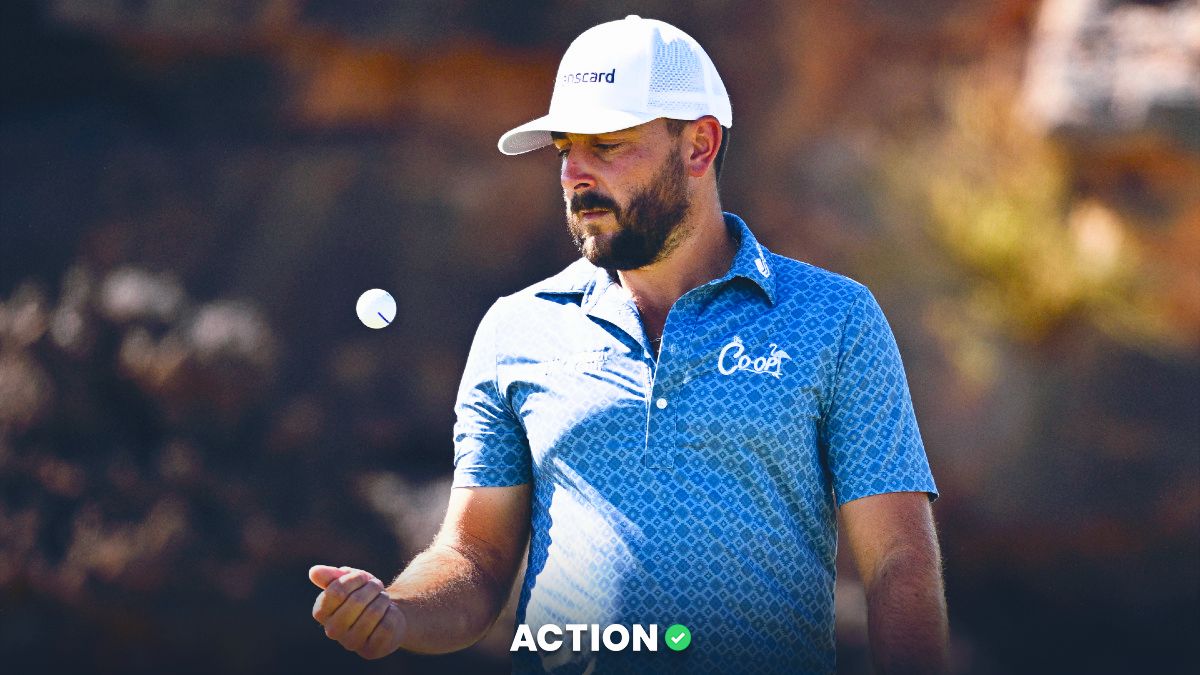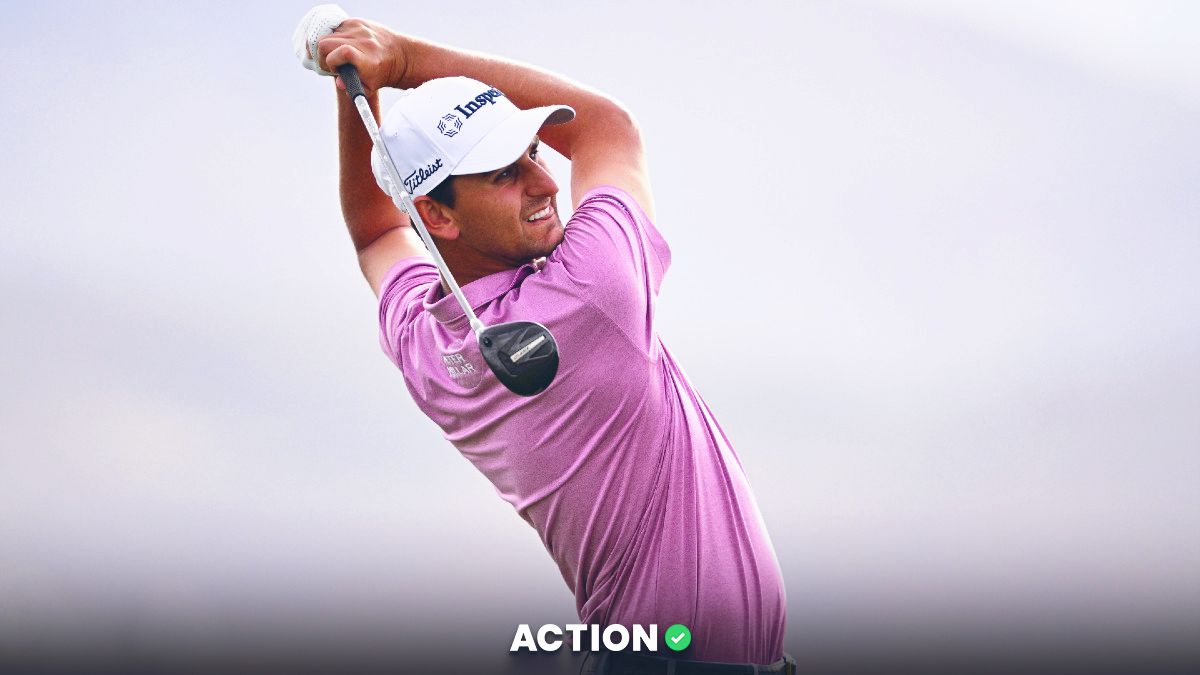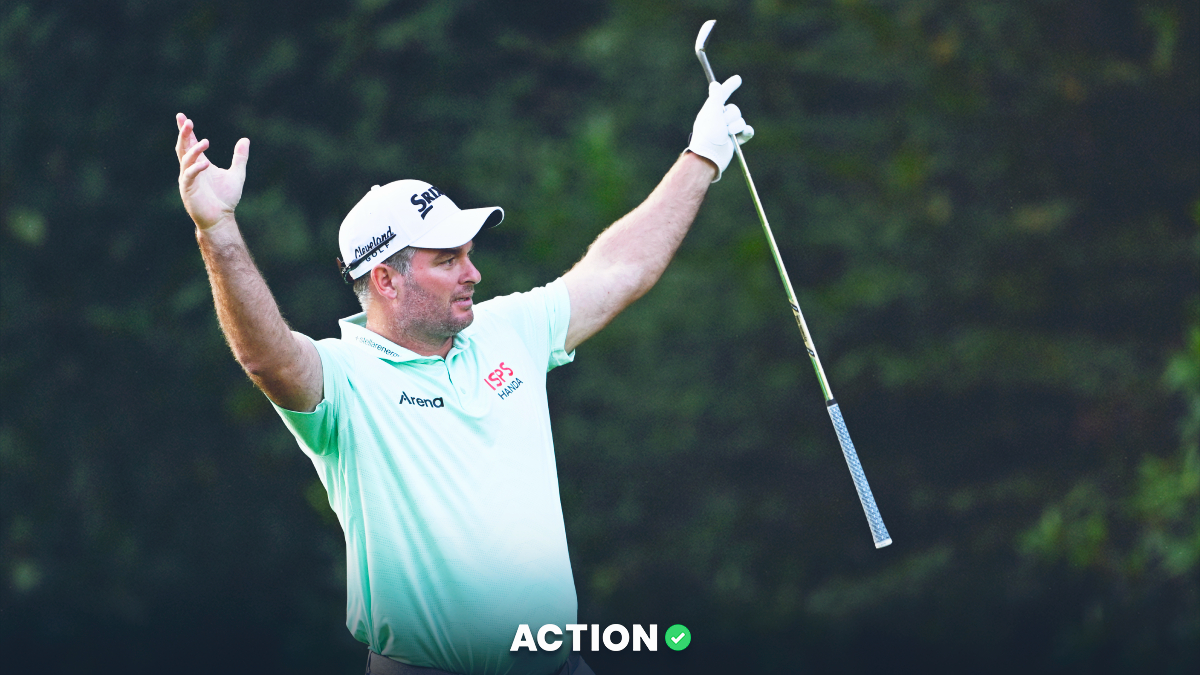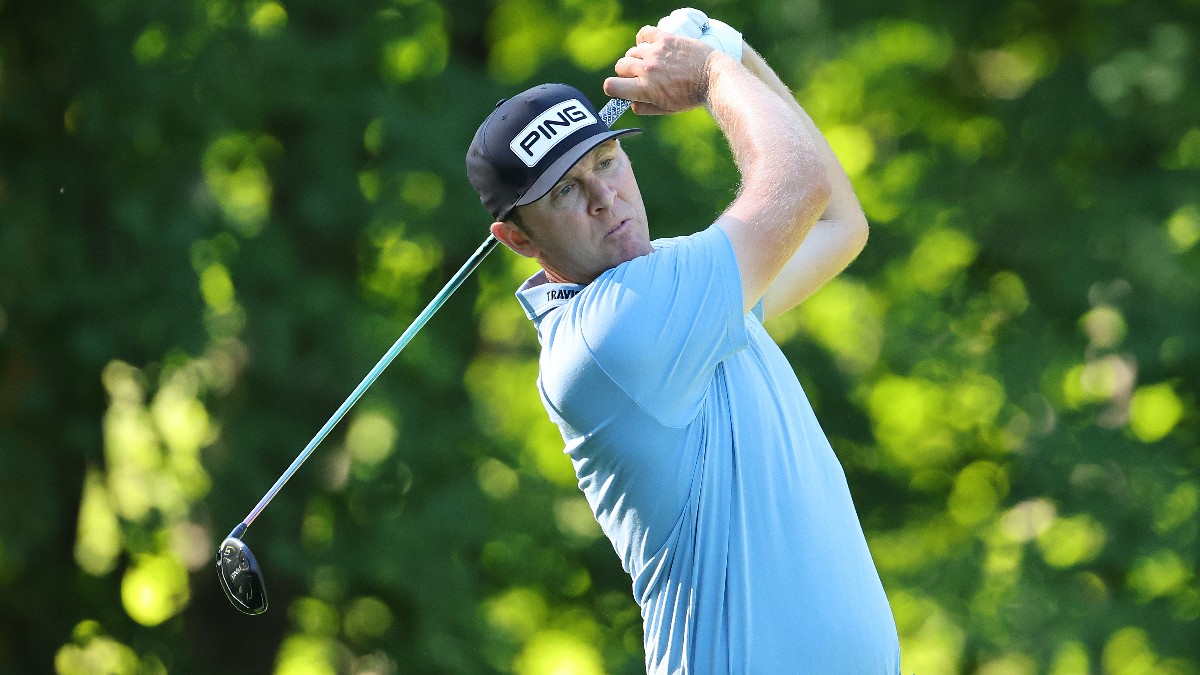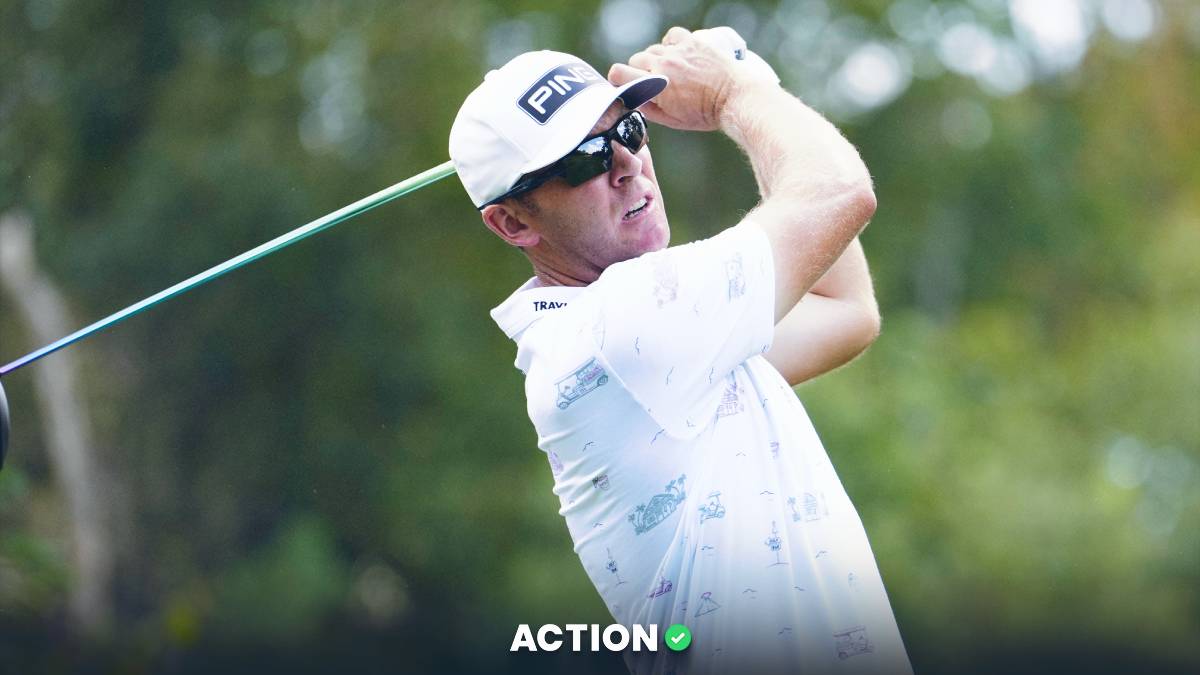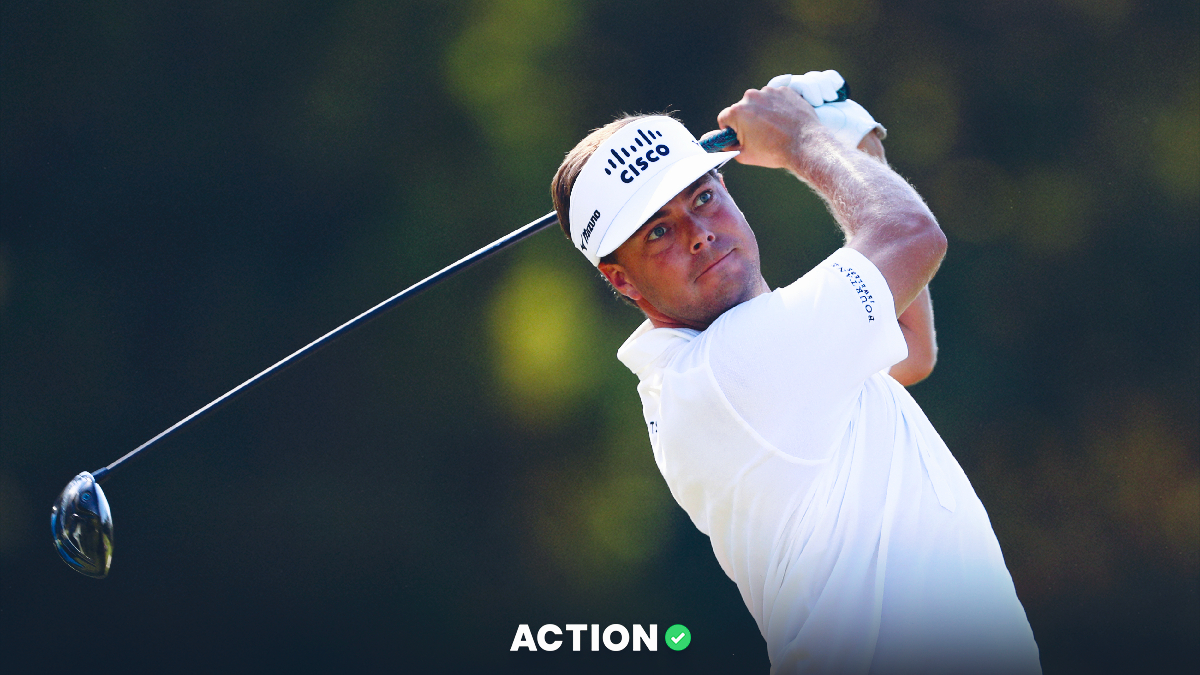SHEBOYGAN, Wisc. – Entering the week as a prohibitive favorite, the U.S. team won the Ryder Cup by a final score of 19-9, the most dominant performance in the modern era of this competition.
Let’s get right to my 10 takeaways from a wild week at Whistling Straits.
1. In the immediate aftermath of this result, many will be asking the following question: Was this U.S. team the greatest in Ryder Cup history?
This feels like an answer overflowing with recency bias, but certainly this squad will be at the forefront of any conversation on the topic. What we can also discern is that this might’ve been the largest disparity between the two teams (since all of Europe was included in the competition) – not just in score, but in talent.
The American side has always been the pre-tourney betting favorite and this year owned an average world ranking in the single-digits. Never before has there been a roster that was loaded with this much talent and really no weak spots. This is less about talent, though, and more about all dozen players buying into the team concept.
When we debate the best teams in other sports, we don’t simply analyze which ones had the biggest stars or the best stats. We examine the overall performance. We look at dominance within the sum of its parts.
Future generations will peruse through the history books and recall that previous teams had players like Tiger Woods and Phil Mickelson, and therefore owned a greater collective total of major titles and other accolades. As we all know, though, that’s not what makes a team special. What happened this week, that’s what does it.
And yes, this team turned out to be very, very special.
2. Captains matter. They really do.
I know the immediate reaction might be some semblance of the following: One team’s players outperformed the other team’s players, so it didn’t really matter what the captains did. That’s a very obtuse, even naïve way of thinking about this. I’m not sure that we can state that Steve Stricker was 10 points better than his counterpart Padraig Harrington, but their impact is baked into that bottom-line score.
From captain’s picks to matching up partners to just setting a tone around the team, each had a massive effect on all of it. For Stricker, I’d argue that he made an impact in three very important ways.
The first is that he composed a plan and stuck with it throughout the entirety. Over the past two decades, we’ve often asked what the difference is between the U.S. and Europe, with the latter having won seven of the previous nine editions of this event. My contention is that much of the perceived advantage came in the planning and preparation beforehand – and the confidence to continue with the blueprint during the weekend. Perhaps only Paul Azinger successfully accomplished this for the U.S. team in 2008, to rousing success. That’s exactly what Stricker did this week, as well.
The second is that he brought 11 of the team’s players together for a scouting mission two weekends ago. World-class players often visit a major championship venue prior to it being played, just to find a comfort level with sightlines off the tees and breaks on the greens. The U.S. players were able to do that, which undoubtedly helped when they showed up this week.
And lastly, Stricker stressed rest and recuperation throughout the week. Brooks Koepka was criticized for explaining that the Ryder Cup often takes him out of his routine, but he wasn’t wrong about that. Instead of emphasizing camaraderie in the team room and offering a bunch of rah-rah speeches, the captain allowed the players to play golf, then do their own thing.
I’m guessing some other teams have enjoyed themselves more during the week, but if the main goal is winning, this was a vital part of that formula.
3. For years, we collectively poked fun at the idea of the U.S. employing a so-called “task force” in order to figure out how to become more successful at the Ryder Cup. It was an easy punchline. Even some of the European players, who played on winning teams without ever needing anything called a task force, snickered at the notion.
Well, it worked.
The entire idea was players from past teams – Tiger Woods, Phil Mickelson, Steve Stricker, Fred Couples, Davis Love III, etc. – taking ownership moving forward. Keeping some continuity, getting their peers to buy into the concept.
We’re only seven years removed from Tom Watson serving as captain, an appointment made by PGA of America officials, which wasn’t necessarily backed by those on the team. What’s happened is that those decisions – any decision which could have even a minor impact on the result – are now being made by the men in the arena. That might seem like a no-brainer idea, but for a long time, it didn’t work that way.
I’m not going to suggest that having a task force was the reason why this team won, nor would I say that the team couldn’t have won if the task force was never created. But the era of just picking the best players and telling them to beat the other guys has clearly evolved. Instead of playing for the PGA of America, these young players are now playing for guys they’ve long admired as competitors, while also playing for themselves.
Whether it’s the captain or the vice captains or the players, everyone involved now owns more engagement in the process and more of a personal investment in the result. It’s tough to suggest that this isn’t wholly beneficial.
4. Entering this week, it felt like Dustin Johnson was a forgotten man on the U.S. roster. Even though he was the elder statesman by a half-decade, even though he ranks higher in the OWGR than anyone else on the team, there was more talk about the likes of Patrick Cantlay, Xander Schauffele, Justin Thomas, Jordan Spieth, Brooks Koepka, Bryson DeChambeau and Collin Morikawa.
Maybe that was for good reason, as DJ sort of sputtered through the summer, never really having his best stuff at the majors or other important individual events.
As it turns out, he was just saving it for this one, not only becoming the only U.S. player to play all five sessions this week, but becoming the first American player since Larry Nelson in 1979 to post a 5-0-0 record. Other teammates were flashier (Bryson) and more fiery (JT), but Johnson just did his usual thing, making birdies in bunches and barely breaking a sweat in playing his best golf of the entire year.
Over the years, DJ hasn’t gotten enough credit for being such a world-class player, perhaps because he so often makes it looks easy. He’ll get full credit for this, though – and for good reason. He deserves all of it.
5. Two things we were reminded of this week: Jon Rahm is far and away the best player in the world right now. Yes, he lost to Scottie Scheffler in Sunday’s singles session – and all credit to Scheffler, by the way, who stared down the world No. 1 and never flinched, which should give him some good mojo moving forward – but Rahm is an immensely talented dude who might’ve still not reached his peak. He couldn’t put this entire European team on his back, but he certainly tried during the four team sessions.
The other is that if being the second-best player in the world is every other player’s potential short-term ceiling, then Patrick Cantlay is quickly rising on the list of those who could ascend to that spot. He’s always been talented, always been confident.
What he’s found in the past few months, though – and you can see it written all over his body language – is a comfort level both inside and outside the ropes that he didn’t previously own. Just a year or two ago, Cantlay was a dull quote in interviews and a bit dull on the course. Just recently, though, he’s become very well-spoken and analytical in interviews, while just appearing more comfortable on the course.
I don’t expect him to be pumping up the crowd or putting his hand to his ear the next time he tees it up in an individual event, but I do think he’s more prepared for the spotlight that comes with being a superstar than ever before.
Oh, and if I’m making one bet on next year’s Masters right now, just over six months before it starts, he’s probably my guy.
6. There are a handful of indelible images that we’ll always remember from this year’s Ryder Cup.
Spieth hitting a 75-foot-high flop shot and nearly having his momentum take him into Lake Michigan was brilliant. Thomas hit approach shots to set up eagle on the 16th hole in back-to-back days. Bryson hit one 417 on a par-5, taking a line that seemed absurd. Shane Lowry made a putt on the 18th green Saturday, the ball tumbling into the cup as his father celebrated in the background.
For my money, though, Bryson’s entire first hole in his Sunday singles match against Sergio Garcia was the most memorable moment. If you missed it – although, how could you? – he drove the green on the par-4, grabbed his putter and raised it to the crowd while walking off the teebox, then rolled in the eagle putt and hammed it up for the crowd.
Five, 10, 20 years from now, when we think back on this week, I believe we’ll remember this shot over any others.
7. I do believe that we had a huge changing of the guard this week in the #TeamBrooks vs. #TeamBryson debate. A massive reversal – for now, at least.
By week’s end, one of the themes to this summer-long subplot was Stricker revealing that the two nemeses actually asked to play together. That’s very telling – about both of them.
One of ‘em gained more traction in the “rivalry” this week. Even though he played varying degrees of solid golf during the week, there was always a sense around Koepka that he wasn’t completely buying into the idea of being part of the U.S. team, from being the lone player to skip last week’s scouting trip to his usual nonchalant attitude toward, well, everything.
He also didn’t exactly endear himself to many fans when, after twice being denied a free drop from a drain in his Saturday morning foursomes match, he said to two rules officials, “If I break my wrist, it’s f—ing on you.”
At his best, Brooks is a no-nonsense, intense competitor who plays with an everlasting chip on his shoulder – all reasons why he’s owned a massive lead in the polls against DeChambeau throughout the summer. At his worst, though, Koepka is a bully who comes off as a little too selfish for his own good, especially in this type of environment.
Meanwhile, Bryson spent the week pandering to the crowd, equal parts hero and ham. Whether he was brandishing his driver through the air like a sword or calling for the crowd to make more noise, he thrived in that spotlight, hitting booming drives all over the ballpark and making more than his share of big putts.
I have no idea what the percentage of #TeamBrooks vs. #TeamBryson supporters was prior to this week, but I know that it’s now a closer gap than at any previous point in the past few months.
8. Players competed while – gasp! – wearing hoodies this week (albeit cashmere ones). A few of ‘em shotgunned beers on the first tee before a session when they weren’t playing. Home fans cheered when the opposition hit a poor shot or missed a putt.
I know there are plenty of golf traditionalists out there who spent the weekend in a constant state of cringe, but I hope these people are severely outnumbered.
This is a sport which spends inordinate amounts of time and revenue attempting to reinvent itself and skew toward a younger demographic. I can reel off a dozen grow-the-game initiatives which flopped over the past several years – and for good reason. The game needs to grow genuinely, without some corporate executive dreaming up a marketing plan for how to do it.
My guess is that this past weekend generated plenty of new fans, many of whom are part of that coveted demographic. They will be attracted to the game because players aren’t dressed like the old pleated-khaki crowd and they look like they’re having a good time in front of the public.
I don’t see the big deal. Actually, I do see it: The big deal is that fun sells and this event showed that golf can be fun. Oh, and as for cheering bad shots and booing good shots? Well, this is a team event with serious partisanship. Sports would be boring with no rooting interests. So would the Ryder Cup.
There might’ve been a few catcalls that were over the line, but cheering for your team and against the other one is an innate aspect of team sports. I’ve got to believe the culture of this week’s event will bring more eyeballs to the game, rather than chasing some purists away from it.
9. Competing at home is a major advantage in other sports such as football and basketball. It might be an even bigger advantage in the Ryder Cup.
In those other endeavors, the home squad might enjoy full support from the crowd, but a football team can’t stretch the field longer than 100 yards and a basketball team can’t raise the net higher than 10 feet. At the Ryder Cup, where the home side is responsible for setting up the golf course, being able to create certain angles which better suit your players is massive.
Three years ago, host venue Le Golf National absolutely set up better for the home side Europeans, short and tight with gnarly rough on either side of the fairways. This week, Whistling Straits played as a big ballpark, set up for bombers to make plenty of birdies. Instead of fairways pinching in at 300-plus yards, they often widened, letting guys like Bryson and DJ swing for the fences, while many of the shorter-hitting opponents couldn’t keep up.
I can’t wait to see how Marco Simone Golf & CC in Rome plays in two years, as the European captain attempts to neutralize the American dominance from this week. The road team will undoubtedly be a prohibitive favorite once again, but let’s remember how the home-course advantage has an impact and watch how the home team tries to leverage it.
10. OK, now what? What’s next for this U.S. team? A lot can happen in two years, but it’s really difficult to envision a scenario in which 9-10 of these players aren’t back on the roster.
Maybe a Will Zalatoris or a Sam Burns can break their way through, but on a young team, I don’t see a whole lot of guys who won’t still be playing world-class golf.
As for the captain, well, the betting favorite might be Zach Johnson, who served as an assistant this past week. The universal assumption is that Phil Mickelson will take the gig two years later at Bethpage. And of course, Tiger Woods could always snap his fingers and say he wants it, which nobody would deny.
Here’s an idea, though: They could always go with Stricker again. Other national teams employ a coach in perpetuity, as opposed to a singular event. I’ve often believed that the Ryder Cup could be ripe for this type of continuity, although Stricker winning in his home state might be the walk-off moment he wants – and deserves.
Speaking of Stricker, one last point: It is just so cool that a man who never won a major, who never played great in the Ryder Cup, served as captain in his home state, had to wait an extra year, then wound up having this much success. As he said afterward, “I never won a major, but this is my major right here.”


